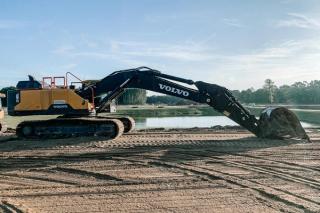
The Dirt on the new Ontario Excess Soil Regulations
- Post Date
- 12 May 2022
- Read Time
- 4 minutes

The Government of Ontario has released new rules about how excess soils should be handled. Are you prepared?
Come January 1, 2021 the new regulatory changes will start to take affect and will be phased in over a five-year period. The intent of the new Excess Soil Regulation is to:
- Divert reusable soil from land fills;
- Provide clear rules for beneficial reuse; and,
- Set minimum requirements for excess soil documentation and characterization.
So why does this matter you to you? Because new rules for managing soil will impact project timelines and costs.
What if you have a project that needs to get rid of soil?
If your site needs to get rid of soil, there are new requirements for project planning and tracking soil:
1. Determine your project planning requirements
Additional project planning requirements are now needed for larger urban sites (i.e. >2000 m3) or sites more likely to be contaminated (e.g. industrial properties, gas stations etc.). A Qualified Professional in Environmental Site Assessment (QPESA) will need to be retained to help you through this process. New planning requirements include:
- Assessing the past uses of the land: This is the first step. This step will identify areas of potential contamination and guide the rest of the process.
- Creating a sampling and analysis plan: The Sampling and Analysis Plan is developed based on the volume of soil, site characteristics and assessment of past uses. Soil sampling will be conducted following the development of the sampling analysis plan and will typically be completed in a staged approach.
- Excess Soil Characterization Report: This report will document the results of soil sampling and site characterization activities and provide a detailed description of the soil that will be sent off-site. The report will need to include details such as a description of results, analytical results, drawings and tables comparing soil results to applicable excess soil standards.
- Soil Destination Report: The destination report will provide details on the destination of the soil including the volume of soil and the standards applicable to the reuse site. This report will verify that the quality of soil meets the standards applicable to the selected reuse site. It’s important to identify potential reuse sites early in the process. Your entire project team (Project Manager, contractors, Qualified professionals etc.) can help identify potential locations where soil can be reused.
Project planning requirements should be completed early to minimize impacts to project timelines.
2. Tracking Soil That Leaves Your Site
For many projects, a tracking system will also be required to document each load of soil that leaves the source site. The tracking system needs to include information such as soil quantity and quality, location of source excavation and final reuse destination, transportation information (date, time etc.), and the names of responsible parties (both source and reuse site).
Other things to Consider: Project Timing – Early planning is key
Additional planning and characterization requirements may put a strain on project timelines. To help to prevent project delays, identify possible receiving sites as early as possible and get a Qualified Person involved during the planning stages to determine standards and help with planning.
The project team should also consider if on-site reuse is an option and figure out if stockpiling on-site or a temporary receiving site outside the project area may be needed.
What if you need soil?
Retain a Qualified Professional to:
- Determine the applicable standards for your site;
- Review planning documents for the source site; and,
- Participate in the tracking system to ensure imported soil meets quality and quantity requirements.
Keep in mind that depending on supply and demand of required soil, the receiving site may have to cover the cost of the planning investigations to keep things on schedule.
Final Thoughts:
Engage your entire project team early in the process to start thinking about soil export and import needs, soil quality and potential reuse/source sites that may work for your project. Cooperation between all members of your project team will help to minimize project delays and costs as new requirements are rolled out.
Please feel free to contact us for advice, or if you have any queries or questions.
Recent posts
-

-

Industrial noise compliance in Alberta: Understanding Directive 038 and Rule 012
by Arthur Kupper
View post -
